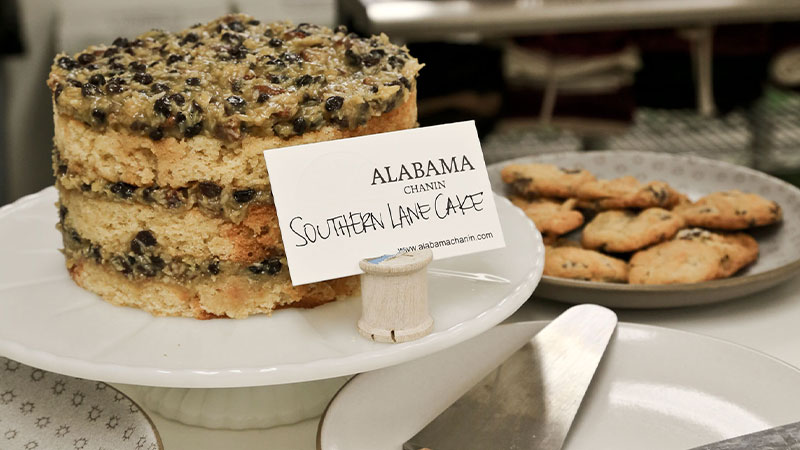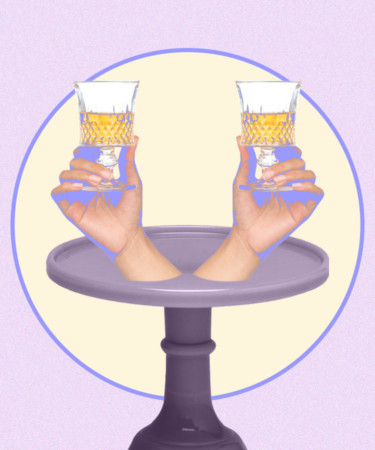All September on VinePair, we’re turning our focus to America’s spirit: bourbon. For our third annual Bourbon Month, we’re exploring the industry legends and innovators, our favorite craft distilleries, new bottles we love, and more.
As America’s native spirit, bourbon has proven to be a multipurpose drink over the last two centuries. It can be consumed neat, in cocktails, or poured on the rocks. During the Civil War and Prohibition, doctors prescribed the boozy beverage for “medical purposes.” And in a tradition that still stands today, bourbon serves as a great additive in myriad culinary dishes — most notably classic American desserts.
Early recipes call for whiskey — rather than bourbon — but we can safely assume that if the recipe is from Kentucky, they’re talking about bourbon. Author Mary Harris Frazer includes a recipe for pecan cake in her 1903 “Kentucky Receipt Book.” She directs readers to add “a wine glass of whiskey,” in a process that has become canon over the decades.
By the time when Frazer concocted her recipe, bourbon was already a common ingredient in cakes, pies, and other tasty treats. Perhaps it was due to a national surplus of the spirit created in part by the Industrial Revolution or the bottling of bourbon in the mid-1800s. Maybe the people of the United States were looking for a new use for alcohol during the rise of the Temperance Movement, which encouraged general abstinence from consuming alcohol in the back half of the 19th century.
Either way, this became a time when bourbon wasn’t just used for drinking (though it remained a popular drink). Bourbon found its place in desserts “out of necessity,” VinePair explains, since vanilla was expensive and not as readily available. The sweet, oaky flavors and high alcohol content of bourbon took a similar effect in baked goods as vanilla, making it a great substitute when the latter is not accessible. Experts recommend using two times the amount of bourbon as vanilla, though a higher proof requires additional time in the oven.
The Lane Cake is a popular bourbon-infused dessert, though it’s notoriously difficult to make. An original recipe can be found in Emma Rylander Lane’s 1898 cookbook, “Some Good Things to Eat.” The filling called for “good whiskey or brandy.” Several variations exist today, all of which require that one special ingredient: bourbon.

Over time, the recipe solidified a position within American culture. In Harper Lee’s “To Kill a Mockingbird,” the Lane Cake served as a symbol of pride for the Finch family’s neighbor, Miss Maudie. In the text, Scout Finch recalls how the cake was “so loaded with shinny” — slang for liquor — “it made [him] tight.”
In 2014, Slate named the cake the “unofficial treat” of Alabama, only to become the state’s official dessert two years later.
President Jimmy Carter, who grew up in neighboring Georgia, recalled holidays where Lane Cakes were at the forefront. “My father … would even make a couple of Lane cakes for Christmas,” Carter wrote in his 2004 memoir, “Christmas in Plains.” “Since this cake recipe required a strong dose of bourbon, it was just for the adult relatives, doctors, nurses, and other friends who would be invited to our house for eggnog.”
Of course, the Lane Cake isn’t the only variety of bourbon treats made in American kitchens. In the unofficial “bourbon heartland” of the nation, Kentucky Bourbon Cake is a popular Southern dessert perfect for Derby Days. These come in many forms, adapted over the years from the classic English fruitcake. The filling uses upwards of two cups of bourbon and is a simple sponge cake with the occasional nut or fruit added in.
These two cakes only scratch the surface of America’s love for bourbon-filled desserts. Modern iterations include everything from bourbon peach pies to chocolate bourbon balls (which don’t need to be baked, unlike most bourbon desserts).
